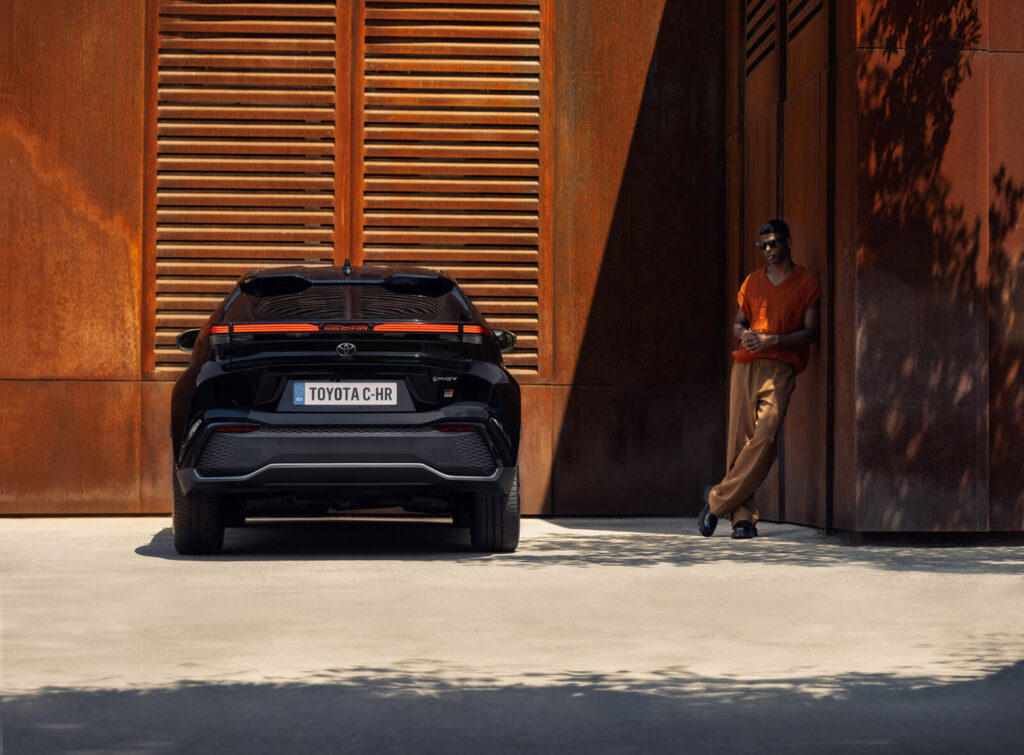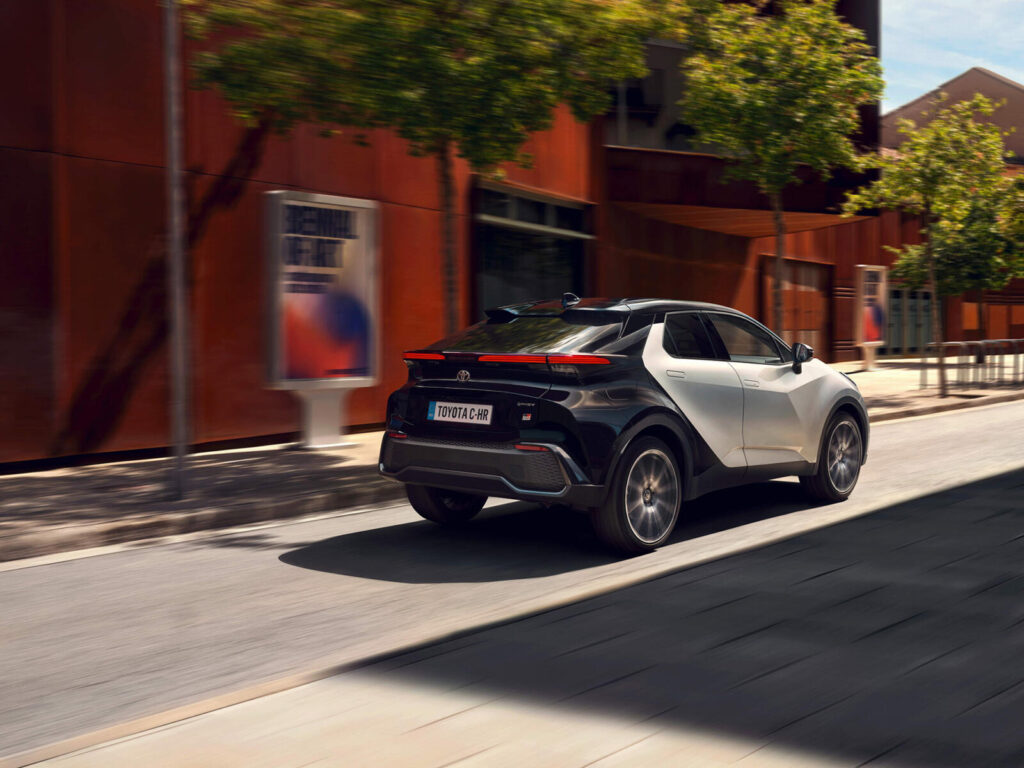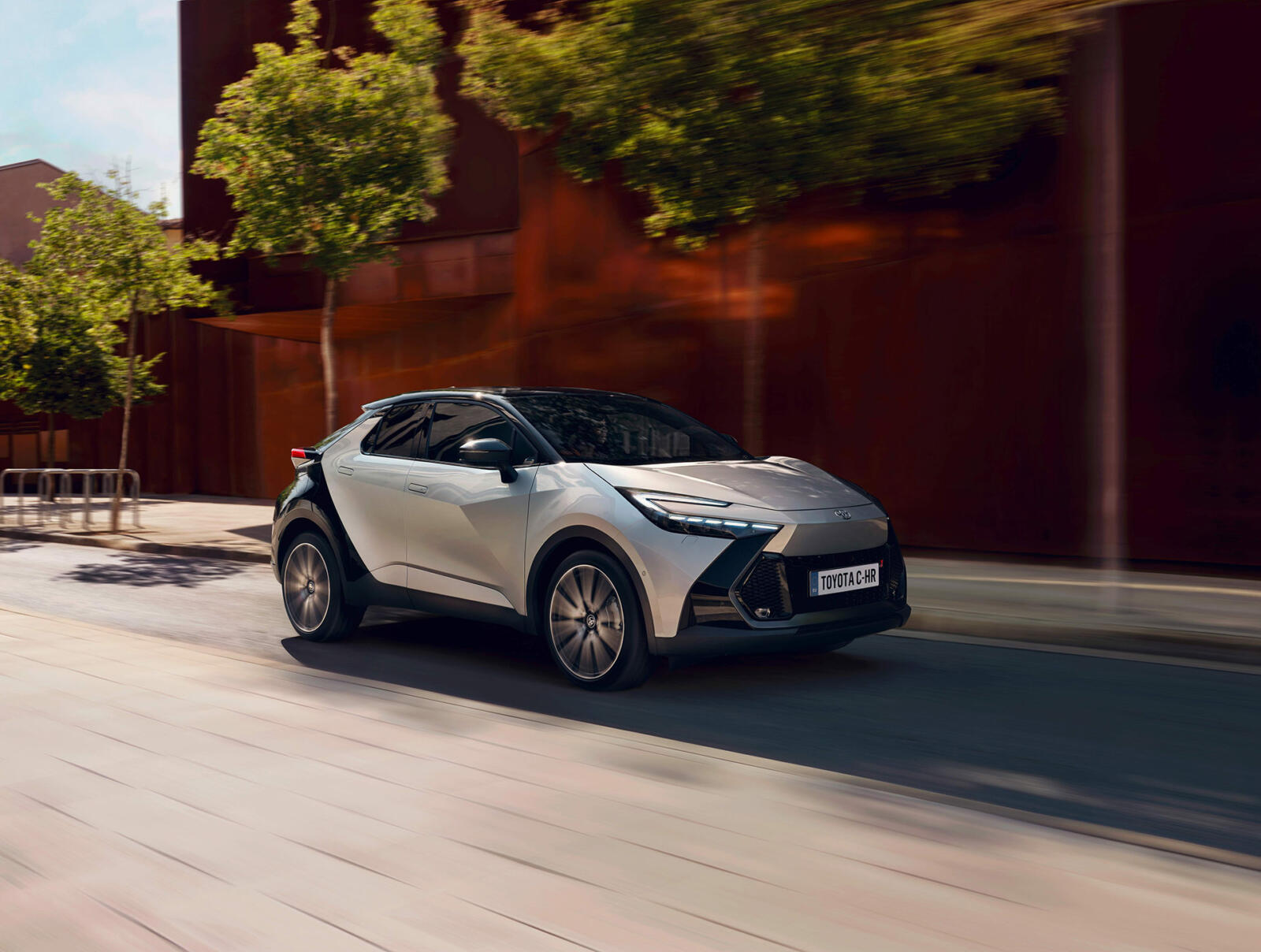There must have been some personnel changes in the office at Toyota’s headquarters in Tokyo where the staff select names for new cars. In the past we got very sensible names like: Aygo, Corolla, Camry, Prius and Yaris. But in recent years there seems to be a move towards letters and numbers, hence the C-HR which I drove last week and the electric bZ4X.
Toyota has been manufacturing the C-HR since 2016. The car is built on the same platform as the E210 series Corolla and it’s positioned between the Yaris Cross and Corolla Cross in Toyota’s SUV line-up.
The original C-HR was developed to help the Japanese brand grow its market share in Europe and that plan seems to have worked. Development work on the new version of the C-HR was done at Toyota’s technical centre in Brussels. So now it’s truly an EU car.
The second generation of the C-HR is available in: Sport+, Sol, Premiere Edition and GR Sport Premiere. My 1.8-litre Sport+ test car came in a very attractive shade of white, complimented with some lovely black touches. The roof is completely black and there are lovely black touches on the grille, at the rear and on the bottom of the doors.

That attractive black and white look certainly got a lot of favourable comments from random people I met last week, while parking on the street and in supermarket car parks. There are also very attractive tail lights at the rear, while the headlights are also cute.
At first glance I thought it might be a full electric car as the doors handles pop out the same way they do in some electric cars. But it’s definitely a hybrid and a plug-in hybrid version is also available.
Inside on the dash, the infotainment screen is tilted slightly towards the driver. Also the cubby hole near the gear lever seems to be designed solely for the driver. Of course the front seat passenger can place items there, but the lay-out makes it look very much like it’s the driver’s own special place to hold items like phones and sun glasses.
You don’t get an old-fashioned button to control the radio volume, instead there is a simple ‘plus and minus’ button underneath the infotainment screen, which is very easy to use. And the infotainment screen is certainly user-friendly, something that cannot be said about every new car I drive.

The styling in the C-HR has been described as almost concept-like, but believe me, this is the real thing.
The seats are very comfortable and in the back there is ample room for three adults. The boot is very deep, but no spare wheel.
Toyota has recently reduced their prices and you can now get a C-HR at a starting price of €40,520. The Sport+ version I drove starts at €45,010. Road tax is €180.
Sales of electric cars have continued to fall month by month in Ireland this year. Surely hybrid is a much better option. With a full tank of petrol you should get over 700km from the C-HR with its frugal engine.
Who needs electric when you can do still do your bit for the planet and no range anxiety.










